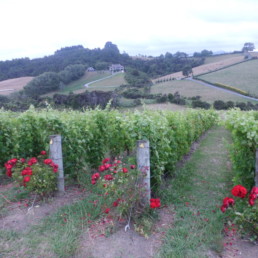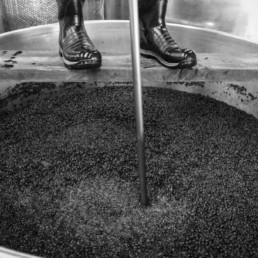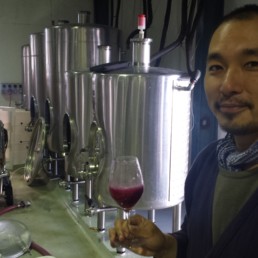Overall
Overall, 2016 vintage was a season of two halves – a markedly cool Spring, right up to about Xmas time, followed by a very warm and reasonably dry summer and Autumn.
Of particular note, once the warmer temperatures hit about mid to late January, we experienced particularly warm nights and finished up with Growing Degree Days(GDD) close to the exceptional 2103 and 2014 vintages. February 2016 seemed to be especially warm.
What all this meant for the grapes and vineyard management
Despite winemakers getting excited before Spring 2015 about talk of another warm El Nino pattern, the pre-Xmas pattern left many of us concerned.
You can never be sure how the season is going to progress and there is no guarantee that you will ‘catch up’ on a cool start to a season.
In response to the cool start, we started talking early on about extra shoot-thinning, possible crop-thinning and certainly opening up the canopies with significant leaf-plucking prior to net application.
Flowering and fruit-set for us was rather variable with some blocks well down in yield and some slightly up on 2015.
Chardonnay, Viognier and Barbera were well down on last vintage. The Barbera and (some of the) Viognier yield was hideously low.
Montepulciano was about on par and Tannat slightly down.
The only variety with higher yield was our Syrah.
The ripening pattern for some varieties this year was rather odd – take Chardonnay for example. The fruit looked and tasted ripe at lower Brix than other vintages. This year we harvested the Reserve Chardonnay grapes at just on 23 Brix rather than the normal 24 – 24.5.
I put this down to cooler early-season temperatures reducing the sugar accumulation but the warm summer nights dropping more acid to provide riper flavours at lower Brix.
Whilst we don’t have Merlot on our vineyard, I understand a similar trend occurred for this variety also. The trend was also apparent, but to a lesser extent, in most of our other varieties.
The rain over late-March to early-April (when most fruit is harvested) was such that it caused no major issues for us. The significant contour on our vineyard blocks coupled with extensive leaf-plucking meant that we suffer less than most from rain events.
In addition, the small flat and shaded areas of our main Chardonnay block is now taken early in the season for our Methode Traditionnelle.
On the whole however, 2016 can be regarded as an average to better-than-average vintage for rainfall during the critical harvest period.
As is quite common for Hawkes Bay, the weather tends to settle down again in late April.
This is ideal for our late-season varieties (and styles) Tannat, Noble Viognier and Montepulciano. The latter was picked on May 10th in 2015 and again this year.
The 2016 Wines
With everything now in, we are sitting back reflecting on another excellent de la terre vintage.
We’re still pinching ourselves that, having taken on our new vineyard in 2013, we have had 4 excellent seasons.
The only down side for us is that our barrels and tanks are somewhat less full than we expected/hoped. The upside of this equation however is that the wines have more concentration – and I’d take this any day over yield.
The whites are rich in flavour with great acid balance – “clean, ripe grapes” – that’s all you ever ask for as a winemaker. The intensity of flavour in this year’s Reserve Viognier and Chardonnay is the strongest yet.
We did some fine-tuning to the winemaking this year in order to adjust to the slight vintage variations in the fruit – as well as an ongoing desire to evolve our wine styles.
The reds also have great flavour concentration and colour.
Acid levels appear to be lower but we have to wait for malos to complete to assess the final balance.
Alcohols may be slightly down across the red range this year but ripe/soft tannins, rich flavours and good colour are what count most in reds.
Tony Pritchard – Owner/Winemaker


